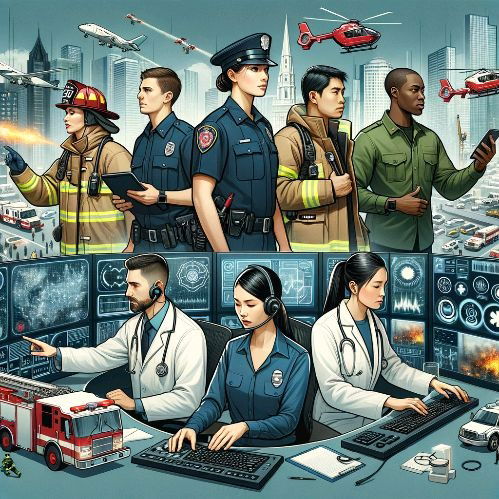Introduction
Public safety is a broad term that encompasses the welfare and protection of the general public. It involves various strategies, policies, and services designed to safeguard individuals and communities from threats such as crime, natural disasters, and other emergencies. This article aims to provide an informative exploration of public safety, its key components, and the roles of different agencies in ensuring a secure environment for all.
Key Components of Public Safety
- Law Enforcement: Police and sheriff’s departments are at the forefront of preventing and responding to crime, maintaining law and order, and ensuring the safety of citizens.
- Fire Services: Fire departments play a crucial role in public safety by responding to fires, conducting rescue operations, and providing fire prevention education to the community.
- Emergency Medical Services (EMS): EMS providers offer critical medical care and transportation in emergencies, ensuring timely medical intervention for those in need.
- Disaster Response and Management: Agencies like FEMA (Federal Emergency Management Agency) and local emergency management departments coordinate responses to natural disasters and catastrophic events, focusing on mitigation, preparedness, response, and recovery efforts.
- Public Health: Public health departments work to protect the health of the population through disease prevention programs, health education, and response to public health emergencies.

The Importance of Public Safety
Public safety is fundamental to the well-being and quality of life of a community. It ensures:
- Protection from Harm: Reducing the risk of harm from criminal activities, accidents, and disasters.
- Peace of Mind: Creating a sense of security that allows individuals to live, work, and play without fear.
- Economic Stability: Safeguarding businesses and investments by creating a secure environment conducive to economic activity.
Challenges in Public Safety
Public safety agencies face numerous challenges, including:
- Resource Limitations: Budget constraints can affect the ability of agencies to provide comprehensive services.
- Technological Advancements: Keeping pace with rapidly evolving technology, including cyber threats, requires ongoing training and investment.
- Community Relations: Building and maintaining trust between public safety agencies and the communities they serve is crucial for effective public safety measures.
Enhancing Public Safety
- Community Policing: Law enforcement agencies are increasingly adopting community policing strategies to build stronger relationships with communities and collaboratively address safety concerns.
- Technology and Innovation: Utilizing advanced technology, such as surveillance systems, drones, and data analytics, can enhance the efficiency and effectiveness of public safety efforts.
- Public Education and Awareness: Educating the public on safety precautions, emergency preparedness, and crime prevention can empower individuals to contribute to their own safety and that of their community.
Conclusion
Public safety is a multifaceted field that requires the coordinated efforts of various agencies and the community. By understanding the components of public safety and the challenges faced by agencies, individuals can better appreciate the importance of these services and the role they play in ensuring a safe and secure society.

Leave a Reply